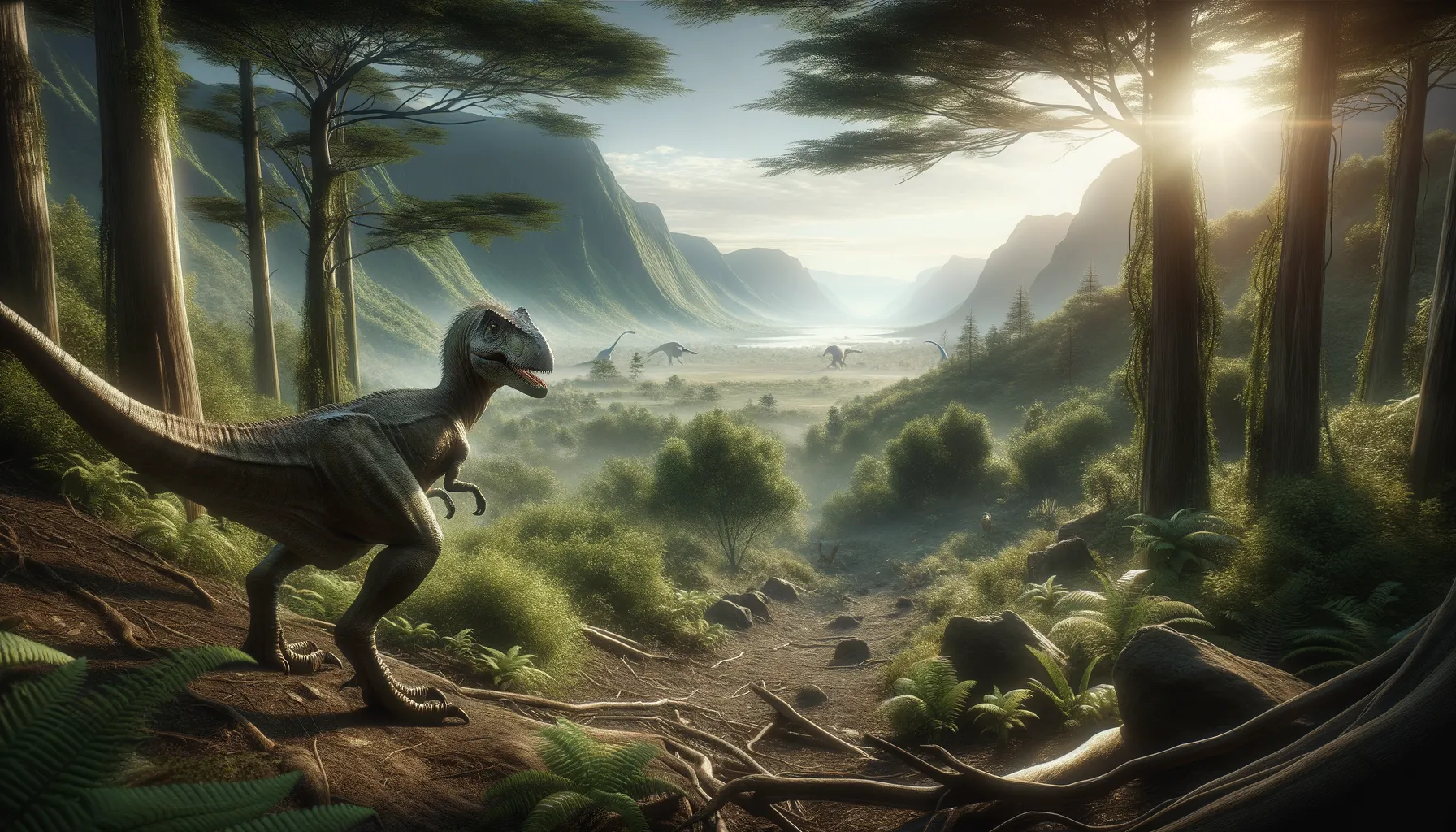
Aviatyrannis
A small hunter with big ancestry.
Period
Jurassic
Length
About 1.5 to 2 meters long.
Height
Around 0.9 meters tall.
Weight
Approximately 40 kilograms.
Aviatyrannis was a small theropod dinosaur that roamed the land during the Jurassic period. Known for its modest size, this carnivorous creature likely preyed on small animals and scavenged for food. Its fossils have provided key insights into the evolution of theropods, hinting at the diverse ecosystems it inhabited. As a close relative of later and larger tyrannosaurs, Aviatyrannis helps paleontologists understand the lineage that eventually led to the iconic Tyrannosaurus rex.
Diet
Aviatyrannis was carnivorous, likely feeding on small animals, insects, and possibly other reptiles. Its small size suggests it was an agile predator, capable of quick movements to catch prey.
Hunting
Considering its moderate size, Aviatyrannis probably relied on stealth and speed to capture its prey. It may have been a solitary hunter or hunted in pairs, targeting smaller animals in its ecosystem.
Environmental challenges
Aviatyrannis faced challenges such as competition for resources with other small theropods. Climate fluctuations during the Jurassic also impacted its habitat, requiring adaptability to changing environments. Predators larger than itself posed significant threats, necessitating the development of survival strategies.
Speed
Moderately fast relative to its size.
Lifespan
Estimated around 20 to 30 years.
First discovery
Discovered in Portugal in 2000.
Fun Facts
- Aviatyrannis lived about 150 million years ago during the late Jurassic period.
- Its name 'Aviatyrannis' means 'grandmother tyrant', hinting at its relation to the more famous Tyrannosaurus rex.
- Aviatyrannis was a small theropod dinosaur, roughly the size of a chicken.
- This dinosaur likely weighed only around 3 kilograms, making it quite tiny compared to later tyrannosaurs.
- Aviatyrannis fossils were first discovered in Portugal, indicating that Europe was home to a diverse array of dinosaurs.
- Despite its small size, Aviatyrannis was likely a carnivore, hunting small prey or scavenging for food.
- The discovery of Aviatyrannis helps paleontologists understand the evolutionary history of the tyrannosaur lineage.
Growth and Development
Evidence suggests that Aviatyrannis experienced rapid growth phases during the early stages of life. It likely reached near full size by its early teens, after which growth rates would have slowed. This growth pattern helped it quickly become an effective predator.
Habitat
Aviatyrannis inhabited semi-arid regions with scattered vegetation, such as ferns and conifers. These areas provided ample cover and diverse food sources, including insects and small vertebrates. The landscape it called home was shared with a variety of other dinosaur species.
Interaction with other species
Aviatyrannis likely had to navigate complex interactions with both competitive theropods and other dinosaur species. Scavenging opportunities meant remaining vigilant to avoid confrontations with larger predators. Symbiotic relationships with smaller species might have aided its survival, through mutual benefits like hiding opportunities or leading to food sources.
Natural lifespan
Aviatyrannis had a natural lifespan of about two to three decades.
Reproduction
Aviatyrannis, like other theropods, likely reproduced by laying eggs. Its nests were probably built in shaded, protected areas to shield the young from predators and environmental stressors. Parental care may have been present, with at least one parent guarding the nest.
Social behaviour
Aviatyrannis may have exhibited solitary tendencies, although occasional cooperation for hunting cannot be ruled out. Territorial disputes would likely occur with other small predators. Social bonds might have been limited to mating pairs or short-term groupings for resource acquisition.
Fossil locations
Aviatyrannis fossils have been predominantly found in Portugal, revealing significant information about its existence in the Iberian Peninsula during the Late Jurassic period. These findings have been pivotal in understanding the diversity of theropods in that region.
